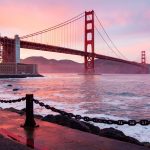Castro Rocks, a small island located in Richmond, California, serves as a vital habitat for harbor seals and sea lions within the San Francisco Bay. This unique geological formation has not only played a crucial role in the ecosystem but also holds historical significance due to its connection to Don Victor Castro and the Richmond-San Rafael Bridge. Despite ongoing challenges posed by environmental pollution, conservation efforts continue to protect and preserve the wildlife that calls Castro Rocks home.
In This Article
Key Points
- Castro Rocks is a pivotal habitat for harbor seals and sea lions within the San Francisco Bay.
- The area has historical significance, including its connection to Don Victor Castro and the Richmond-San Rafael Bridge.
- Ongoing challenges and efforts exist in wildlife conservation amidst environmental pollution.
The Natural and Historical Landscape of Castro Rocks
The Geographical Setting
Castro Rocks is situated within Richmond, California, in close proximity to the San Francisco Bay. The island’s geological formation and characteristics make it an ideal location for marine life to thrive.
Historical Overview
The island’s name is derived from Don Victor Castro, a prominent figure in the region’s history. The construction of the Richmond-San Rafael Bridge, which spans the San Francisco Bay, has had a significant impact on the area surrounding Castro Rocks.
Wildlife at Castro Rocks: A Focus on Conservation
Harbor Seals and Sea Lions: Marine Life of Castro Rocks
Castro Rocks is home to a diverse array of marine life, with a particular focus on harbor seals and sea lions. These species rely on the island as a breeding and resting site, making it a crucial component of their biological needs.
Wildlife Conservation Efforts
Local and national organizations play a vital role in protecting the wildlife at Castro Rocks. However, they face numerous challenges, including human interference and the effects of climate change.
Environmental Challenges Facing Castro Rocks
Pollution in San Francisco Bay
The presence of toxic pollutants, such as DDT, PCBs, PBDEs, PFOS, PFOA, and mercury, poses a significant threat to the marine ecosystem and wildlife in the San Francisco Bay.
Efforts to Combat Pollution
Various initiatives and projects aim to reduce and monitor pollution levels in the Bay Area. Community involvement and policy play a crucial role in environmental protection efforts.
Exploring the Surrounding Islands and Attractions
Nearby Islands and Natural Landmarks
The San Francisco Bay is home to several other notable islands and natural landmarks, including Mowry Slough, Brooks Island, Yerba Buena Island, and Mare Island. These locations offer additional opportunities for outdoor activities and wildlife observation.
San Francisco Bay Area Attractions
The Bay Area boasts a wide range of attractions and activities that complement a visit to Castro Rocks. These attractions not only provide entertainment but also promote environmental awareness and conservation.
The Importance of Castro Rocks in Northern California’s Ecosystem
A Hub for Northern California Wildlife
Castro Rocks plays a vital role in supporting diverse marine and bird species, contributing to the overall biodiversity of the San Francisco Bay ecosystem.
Outdoor Activities and Seal Watching
Visitors to Castro Rocks can engage in seal watching and explore other Bay Area natural landmarks. Participating in outdoor activities not only benefits mental health but also fosters a greater appreciation for the environment.
FAQ
What makes Castro Rocks important for wildlife conservation?
Castro Rocks serves as a critical habitat for various species, contributing to the biodiversity of the San Francisco Bay.
How can visitors responsibly enjoy Castro Rocks and its wildlife?
Visitors should adhere to guidelines for responsible wildlife observation and minimize their impact on natural habitats.
What are the main environmental pollutants affecting Castro Rocks?
The most harmful pollutants include DDT, PCBs, PBDEs, PFOS, PFOA, and mercury, which originate from various sources.
How are conservation efforts addressing the challenges at Castro Rocks?
Current projects and strategies focus on preserving the natural environment and protecting wildlife through research, monitoring, and community engagement.
Can the public participate in conservation efforts for Castro Rocks?
Yes, individuals and communities can contribute to conservation initiatives and environmental protection through volunteering, advocacy, and adopting eco-friendly practices.

